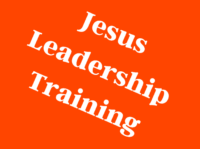When Did Paul Die – Explore the fascinating life and death of the Apostle Paul. Dive into the historical, religious, and cultural contexts of when did the Apostle Paul die, shedding light on his pivotal contributions to Christianity.
Table of Contents
Unraveling the Mystery: When Did Paul Die
The Apostle Paul is an influential figure in Christian history, his teachings and writings forming the backbone of much of the New Testament. But there’s an intriguing question that puzzles both historians and theologians alike: when did the Apostle Paul die? This question, more than a query about a date, opens a window into the vibrant and tumultuous world of the 1st-century Roman Empire.
Timeline of the Apostles Paul’s Life with Dates
Absolutely, below is a general timeline of the Apostle Paul’s life. However, it’s essential to note that many of these dates are approximate, as exact dates for many events in Paul’s life are not definitively known.
| Date | Event |
|---|---|
| 5-10 AD | Paul is born in Tarsus, a city in modern-day Turkey. |
| Early to mid 20s AD | Young Saul studies under the Rabbi Gamaliel in Jerusalem, becoming a Pharisee. |
| 33-36 AD | Paul experiences a dramatic conversion on the road to Damascus and becomes a follower of Jesus. |
| 36-43 AD | Paul spends this time in Arabia, Damascus, and Tarsus before his first visit to Jerusalem as a Christian. |
| 44-46 AD | Paul embarks on his first missionary journey, primarily in Cyprus and modern-day Turkey. |
| 49-52 AD | Paul sets out on his second missionary journey, this time extending his travels to Greece. |
| 53-57 AD | During his third missionary journey, Paul spends much time in Ephesus and Macedonia. |
| 57-59 AD | Paul returns to Jerusalem, where he is arrested and imprisoned in Caesarea for two years. |
| 59-60 AD | Paul is sent to Rome for trial, surviving a shipwreck en route. |
| 60-62 AD | While under house arrest in Rome, Paul likely writes the Prison Epistles (Ephesians, Philippians, Colossians, and Philemon). |
| 63-64 AD | Brief period of freedom; some suggest Paul may have traveled to Spain during this time. |
| 64-67 AD | Paul is re-arrested and eventually executed in Rome during the reign of Nero. |
Unraveling the Mystery: How Many Apostles Did Jesus Have | Jesus | Disciples | Christ
Please remember that many of these dates are estimated based on the chronology presented in the Acts of the Apostles and Paul’s own letters, in addition to some historical documents and traditions.

The Apostle Paul: A Brief Biography
Paul’s Early Life
A look at Paul’s early life, his Jewish upbringing, his training as a Pharisee, and his initial persecution of Christians.
Paul’s Conversion to Christianity (Jesus)
A review of the story of Paul’s dramatic conversion on the road to Damascus, transforming from a persecutor of Christians to one of its most ardent apostles.
here’s a table listing the events of Paul’s conversion to Christianity, based on accounts from the Book of Acts:
| Event | Details |
|---|---|
| Journey to Damascus | Paul, then known as Saul, sets out for Damascus to arrest Christians and bring them back to Jerusalem. |
| Vision of Jesus | As Saul nears Damascus, a bright light from heaven suddenly shines around him. He hears the voice of Jesus asking, “Saul, Saul, why do you persecute me?” |
| Blindness | Saul is blinded by the vision and his companions lead him into Damascus. |
| Visit by Ananias | Ananias, a disciple in Damascus, is instructed in a vision to visit Saul. He finds Saul, lays his hands on him and says, “Brother Saul, the Lord Jesus, who appeared to you on the road as you were coming here—has sent me so that you may see again and be filled with the Holy Spirit.” |
| Restoration of Sight | Something like scales fall from Saul’s eyes and he regains his sight. He gets up and is baptized. |
| Saul becomes Paul | After his baptism, Saul, who is also called Paul, spends several days with the disciples in Damascus. He starts preaching in the synagogues that Jesus is the Son of God, to the amazement of all who knew his previous hostility towards Christians. |
Paul’s conversion is one of the most significant events in the New Testament, marking a dramatic shift in his life and playing a crucial role in the spread of Christianity.

Paul’s Journeys and Letters
Exploring Paul’s missionary journeys across the Roman Empire and the letters he wrote to various Christian communities, which are now part of the New Testament.
The Historical and Religious Context of Paul’s Death
Rome and Christianity
An insight into the uneasy relationship between Rome and the burgeoning Christian faith, setting the stage for understanding the circumstances of Paul’s death.
Persecution of Christians in the 1st Century
An overview of the persecution Christians faced during the 1st Century, including infamous events like the Great Fire of Rome in 64 AD and the ensuing blame on Christians.
below is a general timeline of the Apostle Paul’s life. However, it’s essential to note that many of these dates are approximate, as exact dates for many events in Paul’s life are not definitively known.
| Date | Event |
|---|---|
| 5-10 AD | Paul is born in Tarsus, a city in modern-day Turkey. |
| Early to mid 20s AD | Young Saul studies under the Rabbi Gamaliel in Jerusalem, becoming a Pharisee. |
| 33-36 AD | Paul experiences a dramatic conversion on the road to Damascus and becomes a follower of Jesus. |
| 36-43 AD | Paul spends this time in Arabia, Damascus, and Tarsus before his first visit to Jerusalem as a Christian. |
| 44-46 AD | Paul embarks on his first missionary journey, primarily in Cyprus and modern-day Turkey. |
| 49-52 AD | Paul sets out on his second missionary journey, this time extending his travels to Greece. |
| 53-57 AD | During his third missionary journey, Paul spends much time in Ephesus and Macedonia. |
| 57-59 AD | Paul returns to Jerusalem, where he is arrested and imprisoned in Caesarea for two years. |
| 59-60 AD | Paul is sent to Rome for trial, surviving a shipwreck en route. |
| 60-62 AD | While under house arrest in Rome, Paul likely writes the Prison Epistles (Ephesians, Philippians, Colossians, and Philemon). |
| 63-64 AD | Brief period of freedom; some suggest Paul may have traveled to Spain during this time. |
| 64-67 AD | Paul is re-arrested and eventually executed in Rome during the reign of Nero. |

Please remember that many of these dates are estimated based on the chronology presented in the Acts of the Apostles and Paul’s own letters, in addition to some historical documents and traditions.
Nero and Paul: The Emperor vs. The Apostle
An in-depth look at Emperor Nero, his reign, his attitude towards Christians, and his possible role in the death of Paul.
Relationship Between Rome and Christianity (God)
here’s a table exploring the key events and aspects of the relationship between Rome and Christianity from its inception to the formal acceptance of Christianity as a state religion.
| Date | Event | Details |
|---|---|---|
| 30-64 AD | Tolerance | During the initial decades after Christ’s death, Christians are largely ignored or misunderstood by Roman authorities. Rome viewed Christianity as a sect of Judaism, which was allowed to exist. |
| 64 AD | Persecution under Nero | Following the Great Fire of Rome, Emperor Nero scapegoats the Christians, leading to the first significant persecution. The Apostle Paul is traditionally believed to have been executed during this period. |
| 64-250 AD | Periodic Persecution | For nearly two centuries, Christians face intermittent periods of persecution. The severity and frequency depend largely on the attitudes of individual emperors and local officials. |
| 250-311 AD | Empire-Wide Persecution | Under Emperor Decius, empire-wide persecution begins. Later, under Diocletian and Galerius, Christians face what is now known as the “Great Persecution,” the most severe persecution of Christians in Roman history. |
| 311 AD | Edict of Toleration | Galerius issues the Edict of Toleration, ending the Great Persecution and allowing Christians to practice their faith openly. |
| 313 AD | Edict of Milan | Emperor Constantine the Great and Licinius agree to the Edict of Milan, which ensures religious freedom for Christians throughout the Empire. |
| 380 AD | Christianity becomes State Religion | The Edict of Thessalonica is issued by Emperor Theodosius I, making Christianity the state religion of the Roman Empire. |
These periods marked significant turning points in the relationship between Rome and Christianity, with each event contributing to the evolving landscape of religious tolerance and acceptance within the Roman Empire.
When Did the Apostle Paul Die?
The Traditional View of Paul’s Death
A detailed exploration of the traditional belief that Paul was martyred in Rome around 64-67 AD, during Nero’s reign.
The Evidence for Paul’s Martyrdom
A thorough examination of the historical and textual evidence supporting the view of Paul’s martyrdom, including references in early Christian writings and archaeological findings.
Traditional Theories about Pauls Death
Sure, here’s a table outlining the traditional theories surrounding the Apostle Paul’s death:
| Theory | Details |
|---|---|
| Martyrdom in Rome | The most widely accepted tradition is that Paul was martyred in Rome during the reign of Emperor Nero, around 64-67 AD. This theory is often cited by early Church Fathers such as Clement of Rome and Eusebius. |
| Beheading | As a Roman citizen, Paul would have been granted a quicker and less painful execution method than crucifixion. Beheading by sword is often cited in tradition and aligns with his citizen status. |
| Second Roman Imprisonment | Some believe that Paul was not executed after his first Roman imprisonment (as recorded in the Acts of the Apostles) but was instead released and continued his missionary work before being re-arrested and executed. |
| Journey to Spain | There is a tradition, albeit less common, suggesting that Paul traveled to Spain during a period of freedom before his death. This is based on a passage in his letter to the Romans (Romans 15:24,28) expressing his intention to visit Spain. His subsequent fate, according to this theory, would still be martyrdom in Rome. |
| Natural Death | While not a widely held view, some propose that Paul may have died a natural death. However, this is seen as unlikely given the historical context and the testimony of early Church writers. |
These theories, while varied, represent attempts to fill in the gaps left by the New Testament’s silence on Paul’s ultimate fate. It’s worth noting that while the specifics might differ, there is consensus on his martyrdom, testifying to his profound commitment to the faith he once sought to suppress.
Alternative Theories About Paul’s Death (Die)
Discussion of various alternate theories about Paul’s death, their origin, and their credibility.
The Impact of Paul’s Death
The Martyrdom of Paul and Its Influence on Christianity
Discussing how Paul’s death and perceived martyrdom affected early Christianity and its development.
Paul’s Legacy: The Long Shadow of The Apostle
A reflection on Paul’s lasting legacy, his writings, and the impact they’ve had on Christian theology and practice.
New Testament Commentaries
Below is a table featuring some renowned New Testament commentaries, their publishers, and websites where they can be found. Please note that availability may vary and it’s always beneficial to check multiple sources for acquiring these commentaries.
| Commentary Name | Publisher | Website |
|---|---|---|
| The New International Commentary on the New Testament | Eerdmans | Eerdmans |
| Word Biblical Commentary | Zondervan | Zondervan |
| Baker Exegetical Commentary on the New Testament | Baker Academic | Baker Academic |
| The New Testament for Everyone | Westminster John Knox Press | Westminster John Knox Press |
| Tyndale New Testament Commentaries | InterVarsity Press | InterVarsity Press |
| Expositor’s Bible Commentary | Zondervan | Zondervan |
| The Anchor Yale Bible Commentary | Yale University Press | Yale University Press |
FAQ’s
A compilation of commonly asked questions about Paul and his death, along with concise, informative answers.
1. Q: Who was the Apostle Paul?
A: The Apostle Paul, also known as Saul of Tarsus, was a leading figure in the early development and spread of Christianity. He authored a significant portion of the New Testament.
2. Q: Where was Paul born?
A: Paul was born in Tarsus, a city in modern-day Turkey, which was then part of the Roman Empire. He was a Roman citizen by birth.
3. Q: What did Paul do before he became a Christian?
A: Before his conversion to Christianity, Paul was a Pharisee, a sect of Judaism known for their rigorous adherence to Jewish law. He was also involved in the persecution of early Christians.
4. Q: How did Paul become a Christian?
A: Paul became a Christian after experiencing a vision of Jesus Christ on the road to Damascus. This profound experience led him to convert to Christianity and become one of its most zealous advocates.
5. Q: What is Paul known for in Christianity?
A: Paul is known for his missionary journeys spreading the teachings of Christianity throughout the Roman Empire. He also authored 13 of the 27 books of the New Testament.
6. Q: Which books of the Bible did Paul write?
A: Paul is traditionally believed to have written 13 books of the New Testament: Romans, 1 and 2 Corinthians, Galatians, Ephesians, Philippians, Colossians, 1 and 2 Thessalonians, 1 and 2 Timothy, Titus, and Philemon.
7. Q: How did Paul spread Christianity?
A: Paul spread Christianity primarily through his missionary journeys across various parts of the Roman Empire and through his letters, or epistles, to different Christian communities.
8. Q: What hardships did Paul endure for his faith?
A: Paul faced numerous hardships, including beatings, imprisonment, and shipwrecks. Despite these trials, he remained committed to his faith and mission.
9. Q: How did Paul contribute to Christian theology?
A: Paul’s letters have been instrumental in shaping Christian theology. They delve into key issues like justification by faith, the role of the law, and the nature and implications of Christ’s resurrection.
10. Q: What is the ‘thorn in the flesh’ that Paul talked about?
A: The ‘thorn in the flesh’ is a phrase Paul used in his Second Letter to the Corinthians. It’s thought to represent some kind of suffering or hardship, though the exact nature of this ‘thorn’ remains a subject of debate among scholars.
11. Q: How did the Apostle Paul die?
A: The exact circumstances of Paul’s death are not recorded in the New Testament, but it is traditionally believed that he was martyred in Rome, possibly beheaded, during the reign of Emperor Nero.
12. Q: When did the Apostle Paul die?
A: While there’s no definitive historical record, it’s generally accepted that Paul likely died between 64 and 67 AD.
13. Q: What is the importance of Paul’s letters?
A: Paul’s letters serve as critical sources of Christian doctrine and ethical guidance. They also provide valuable insights into the life of early Christian communities.
14. Q: Did Paul ever meet Jesus?
A: Paul did not meet Jesus during the latter’s earthly ministry. His conversion happened after Jesus’s death and resurrection, following a visionary encounter on the road to Damascus.
15. Q: What was Paul’s main message inhis teachings?
A: Paul’s main message revolved around Jesus Christ as the savior of humanity, the significance of His resurrection, and the doctrine of salvation through faith in Christ. He emphasized the universal scope of Christ’s message, extending the promise of salvation to both Jews and Gentiles.
Final Thoughts – When did the Apostle Paul Die
Summarizing the exploration into Paul’s death, re-emphasizing the complexity of the question, and encouraging further study and reflection on the life and death of this influential figure.




